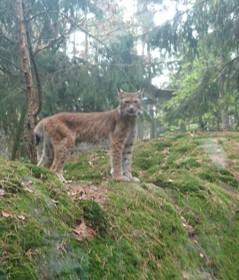Introduction
Stereotypic behaviour
Captive environment like zoo exhibits offers limited space lacking a lot of the environmental stimuli that can be found in the wild, like predators, prey and unpredictable event. In some cases, too static and barren captive environment can lead to reduced animal welfare, eventually potentially leading to the development of stereotypic behaviour. Stereotypic behaviour is defined as repetitive, fixed behaviour without a function and indicate a sign of poor welfare.
Environmental enrichment
Environmental enrichment is used to manage these stereotypies or prevent them from developing. Environmental enrichment can be defined as changes in an animal’s captive environment by providing environmental features that stimulate species-specific behaviour, and hence enhance its well-being.
Sensory enrichment involves stimulation of the animal’s senses with the introduction of sound, scent or visual stimuli.
Aims

- To evaluate the effect of sensory enrichments in captive Northern lynx (Lynx lynx lynx) through behavioural observation.
- To measure the effect of sensory enrichments in Northern lynx (Lynx lynx lynx) by means of new, automated monitoring technology
- To evaluate the pros and cons with monitoring the behaviour of captive lynxes using automatic monitoring technology and traditional visual observations.
- To evaluate the effect of sensory enrichments on pacing in Northern lynx (Lynx lynx lynx).
Responsible for this page:
Director of undergraduate studies Biology
Last updated:
05/16/19
